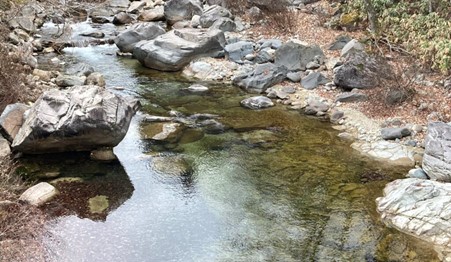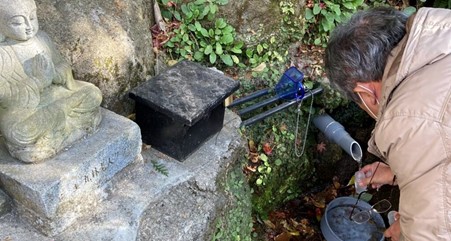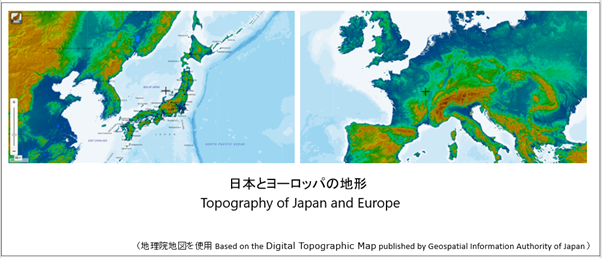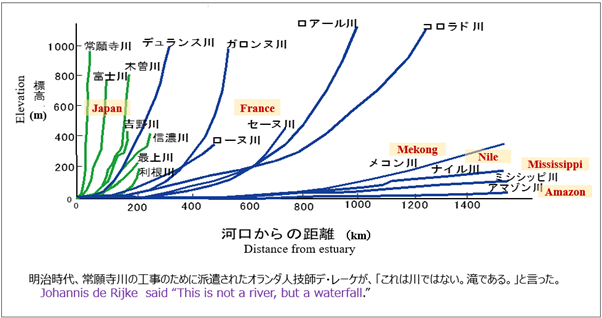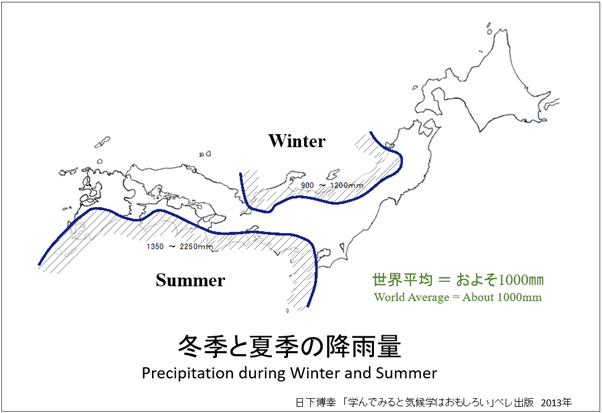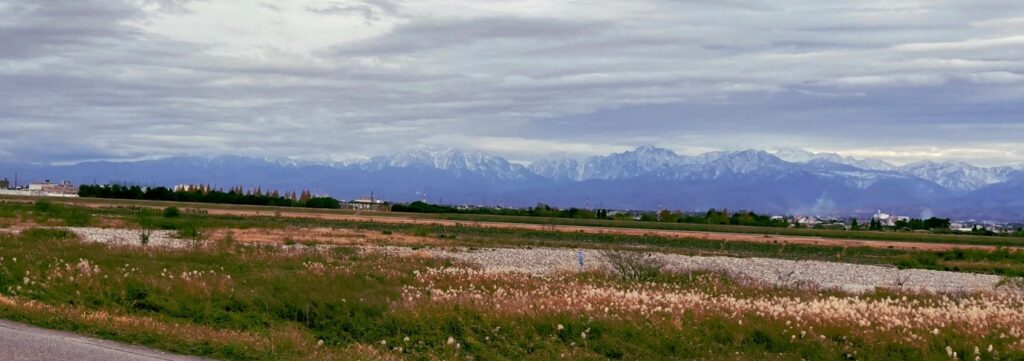2. Characteristics of Water in Japan
Sake the “soul of Japan” is made from water, rice, and rice koji. It is needless to say the importance of “water” for sake brewing because a large amount of water is required for sake brewing, especially that the brewing water is the raw material water of sake itself.
Water for sake brewing uses well water, spring water, tap water, etc., but stricter standards are established than existing drinking water. In this project, we investigated water from the geological point of view, so we will describe the characteristics of these water with geology involved.
The water used as sake brewing water is so-called “fresh water”. Earth is said to be “planet of water”, and about 70% of its surface is covered by the ocean. But almost of it is seawater, and fresh water available to humans (rivers, lakes, ground water, etc.) is only about 1/10,000 of the water that exists on earth.
Water on earth is constantly moving by performing phase transitions (gases, liquids, solids). The water on the sea and the ground evaporates by the energy of the sun, and eventually falls to the surface of the earth as rain and snow. And, it repeats the circulation that it infiltrates underground, flows out of the ground surface, gradually gathers, becomes a river, and comes to the sea. This is called “hydrologic cycle”. It is not yet known when water was born on earth, its origin and timing, but in any case, this hydrologic cycle has been on earth for billions of years.
During this hydrologic cycle, various dissolved substance contained in water (H2O) change. There are three main factors of this dissolved substance change: “climatic factors”, “biological factors”, and “rock factors”. In this project, we are investigating the relationship between water and geology, so we analyzed mainly differences in water quality due to “rock factors”. Since “rock factors” is an underground phenomenon, it can be found that the effect on groundwater is large. Several previous studies that have investigated groundwater have also revealed that water quality is characterized by underground geology and types of rocks.
By the way, the water usually used as sake brewing water is often derived from shallow groundwater. There are the following three factors that characterize the water quality of shallow groundwater.
- Rocks and Soils
- Residence time
- Precipitation
The “hardness” that sake brewers care about represents the concentrations of Ca2+ and Mg2+ contained in water. Even in mineral water, Japanese water is characterized by many softer water than European water, and the reason for this is the difference in residence time due to differences in the “topography”.
Fig. 1 shows a map of Japan and Europe at the same scale. Compared to this, it can be said that Europe has steep terrain such as the Alps in the south, but there are many wide plains and land areas in the north.
On the other hand, in Japan, mountains account for about 70% of the country, and there are few large plains. Therefore, the rain and snow that fall on the surface have a short residence time, and the terrain is difficult for ions to dissolve. This can be found in Fig. 2, where the river gradients in Japan are steeper than each other on the continent.
Another factor is the difference in precipitation.
Looking at the distribution of average annual rainfall in the world, it can be seen that Japan has more precipitation than Europe. In addition, you can also see that the precipitation distribution in Japan is similar to the eastern coast of the North Atlantic Ocean. From the above “topography” and the features of this “precipitation”, it can be found that the hydrologic cycle is more active in Japan than in Europe.
Even in Japan, it varies greatly depending on the season and location. In winter, there is a lot of snowfall on the Sea of Japan side, and in summer, there is a lot of rainfall on the Pacific coast (Fig.3). This regionality is also a major feature of Japan regarding water.

